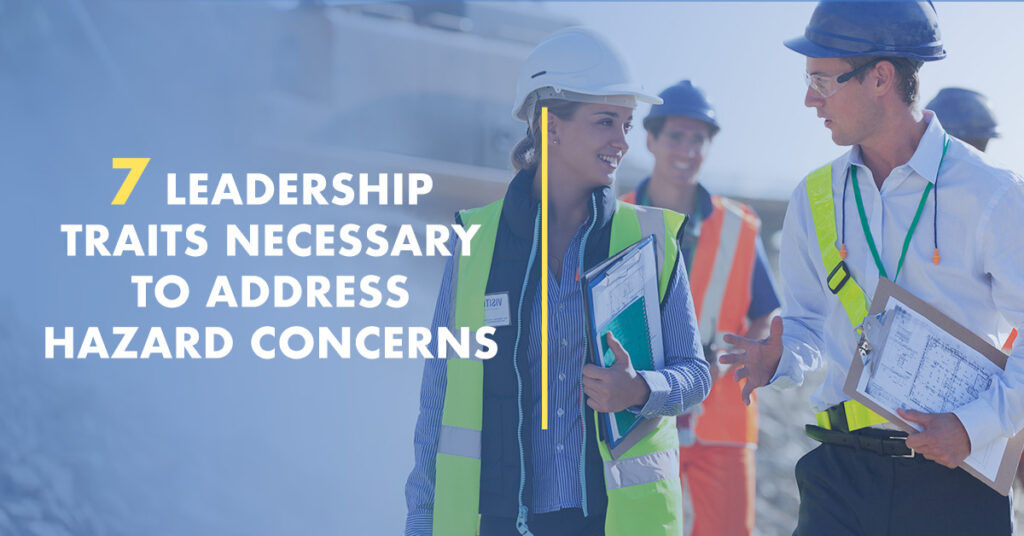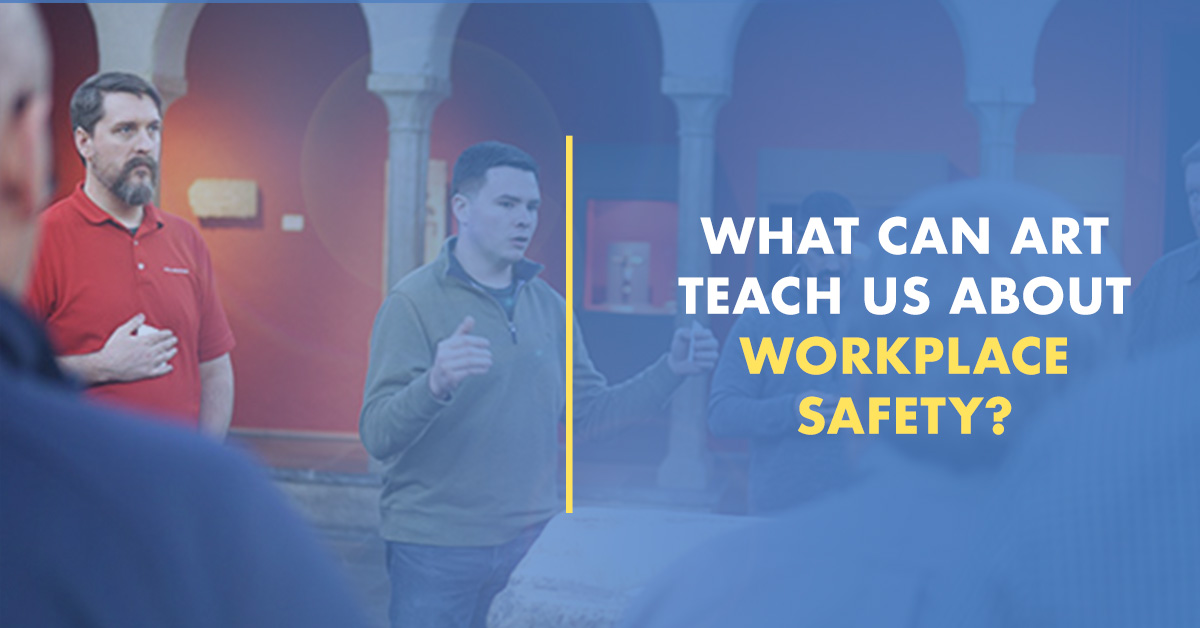Identifying hazards in a work environment is the foundational step to building any effective safety and health program. Comprehensive processes to discover, prioritize (based on severity and frequency of exposure) and mitigate hazards set the agenda for all safety activities to follow. These are staples such as training, worker participation, frequency of inspections/audits, incident analyses, emergency preparedness, event reporting, hazard communication, use of personal protective equipment, climate and culture surveys and executing numerous OSHA regulatory requirements.
The core nature of hazard identification is made clear in OSHA’s General Duty Clause (Section 5(a)(1) of the Occupation Safety and Health Act): “Each employer shall furnish to each of his employees employment and a place of employment which are free from recognized hazards that are causing or are likely to cause death or serious physical harm to his employees.”
Safety Insecurities
If hazard recognition and risk assessment are the core safety and health actions and responsibilities of employers, why are a surprising number of employees currently uneasy about safety and risks on the job?
According to the, 2025 AlertMedia Employee Safety Report survey over 3,000 full-time employees (U.S. and U.K.) expressed troubling safety perceptions:
- 26% employees admit their workplace safety fears have skyrocketed in the past few years
- 26% say something about their job makes them afraid
- 56% admit they don’t feel completely safe at work.
Leadership is the target of several complaints in the survey responses:
- 24% employees believe their employer is NOT doing all they can to keep them safe
- 63% believe their employer considers their physical safety at work extremely important
- Employees believe their employer prioritizes company reputation (75%), bottom line finances (68%) and employee productivity (68%) over safety.
This article examines leadership as it specifically relates to hazard recognition. Leaders who possess critical traits examined in this article for encouraging and recognizing hazard identification and mitigation activities – and who understand and take advantage of the benefits of Visual Literacy, are in the position to address and alleviate many of the concerns voiced by employees and middle managers in the AlertMedia Employee Safety Report survey.
Problems Identifying and Reporting Hazards
Identifying and reporting hazards is problematic in many workplaces. According to the survey:
- 32% say they are not comfortable reporting safety issues such as hazardous conditions;
- 36% think management does not take employee input and feedback on safety issues, such as hazards, seriously;
- 20% say they have been discouraged from reporting a safety issue at work, such as a recognized hazard.
- Perhaps most troubling, 39% who reported a safety issue in the past experienced some form of retaliation, such intimidation and humiliation, when they did. “How could you miss such an obvious hazard?” “You found it, you fix it.” “You’re operating on autopilot. You better get your act together.”
Leadership Shortcomings
Leadership is implicated in the reasons why more than half of the employees surveyed don’t feel safe on the job, according to the survey:
- High stress levels (cited by 49% of respondents who don’t feel safe) can be caused by high workloads, deadlines, leadership pressure and a lack of resources devoted to well-being and mental health.
- Poor communication (39%) can occur when leaders are swamped by responsibilities, distracted, disinterested in safety or use scripts guided by safety professionals or PR staff.
- Leadership demands speed and output from employees at the expense of safety (21%). These demands blunt many safety activities, such as hazard recognition, which require time away from job tasks; slowing down to make detailed observations; time required for analysis, interpretation and recommendations; and time required to prepare and deliver communications.
- The workplace culture does not make safety a priority (19%). Many safety experts contend safety should never be a priority – priorities change – but rather a value, which is more ingrained, personal and less subject to change. Respecting and honoring safety as a cultural value is a shared responsibility of everyone in an organization, but senior leadership has the prime responsibility for setting corporate values by “walking the talk,” as Brett Carruthers, a veteran risk manager said in an interview for this article.
- Lack of support from leadership (30%) can arise from any number of factors, including competing priorities, lack of education in safety and health, treating safety as a matter of compliance, not culture, and cognitive biases.
Leadership Biases
Cognitive biases can blind leaders to real world safety issues, such as reports of hazardous conditions. These biases include:
- Confirmation bias — overvaluing and paying attention only to metrics “confirming” a solid safety program;
- Recency bias – the absence of recent incidents;
- The actor-observer bias — attributing safety findings (hazards) to influences and actions beyond one’s own actions;
- The optimism bias — underestimating the probability of negative events occurring because of hazardous conditions;
- The false consensus bias — overestimating how much employees and managers agree with the leader’s beliefs, attitudes and values (“We have safety under control”); and
- The self-serving bias — taking credit for safety success and blaming others or outside causes for failures such as the existence of hazardous conditions.
Management Concerns About Senior Leadership
Managers below senior leadership levels also express in the survey concerns about safety defenses:
- 28% say their workplace safety fears have increased in recent years;
- One-quarter (25%) say they do not have the support they need from their superiors to keep their team safe;
- More than one in five (23%) say it is not easy to report safety concerns, such as hazards, or give input on their concerns. The same percentage say they do not have clear instructions from their superiors on how to keep their team safe.
Seven Positive Leadership Traits That Make a Difference
As Doug Pontsler pointed out in a recent blog post, leadership is a set of traits and not a position. “It’s how they put their traits to use that truly makes them a leader,” he writes. The fears, concerns and negative experiences expressed in the AlertMedia survey point to leadership that too often lacks seven key traits needed, for the purpose of this article, to support effective hazard identification and control. Leaders who “get” the importance of hazard identification and control are:
1
PROACTIVE
In the words of Stephen Covey, these leaders seek first to understand (what the hazards are and their degree of risk). By encouraging the identification of potential risks, leaders support investing and implementing measures to mitigate dangers before negative events (such as incidents, near misses, property damage) occur. By constantly pushing for proactive hazard recognition, leaders stay ahead of the curve as new hazards arise in an always changing work environment.
Proactive leaders are not reactionary, passive, waiting for something to happen. They are alert and aware of current issues and take actions when needed. They are “in the present.”
Visual Literacy can also be proactive. Visual Literacy is the ability to interpret, understand, and evaluate visual inputs such as obvious or hidden hazards. Proactive Visual Literacy emphasizes not only understanding what is seen but taking action based on that visual information to prevent hazards from causing harm.
Proactive leaders create proactive workplaces, which can also be viewed as continual learning organizations. By constantly being on the offensive, so to speak, in discovering hazardous conditions and other gaps in a safety and health program, organizations never stop learning how to improve safety activities and performance.
2
CURIOUS
Curious leaders can be defined as questioning, inquisitive, inquiring, investigative and “wanting to know.” Says Mark Hansen, safety manager with CoolSky energy company: “A good leader pushes you, asks you questions, asks the right questions.” Safety consultant Wayne Pardy recalls a construction executive who in his safety walkarounds would hold field conversations “just talking to the guys on how they were doing, how the job was going, and reaffirming anyone could reach out to him at any time about an issue with safety. Everyone found him genuine and sincere.”
“Really good business managers get close to the action to understand what’s going on,” says safety consultant David Sarkus. “They don’t sit in their offices or behind their laptops. The really good ones want to know details to further their understanding of the ‘good stuff’ that is going on and the ‘bad stuff’ so performance can be made better. They want to know if there are safety-related issues that need resources.”
Both leaders and employees understand that curiosity creates positive outcomes for their companies, according to a study in the Harvard Business Review. In the survey of more than 3,000 employees, 92% credited curious people with bringing new ideas into teams and organizations and viewed curiosity as a catalyst for job satisfaction, motivation, innovation and high performance.
3
OPEN AND ACCEPTING
Leaders who possess an accepting nature can be defined as affirming, confirming, embracing and approving. They tackle problems head on and integrate solutions into operations. They are open to feedback; listen with intent; and avoid top-down lectures, judgments and comparisons. This is the opposite of “ostrich” leaders with their heads buried in the sand or blinded by denial.
Accepting hard findings is a crucial aspect of effective leadership. This is especially true when hazard recognition activities discover risks, new and old (which can be particularly hard to accept if they have existed unabated for some time). Leaders must be willing to acknowledge and address negative findings, mistakes or failures, and use this information to make necessary safety decisions and improvements.
Leaders who are receptive and open hold themselves accountable for any role they played in creating or allowing hazardous conditions to exist, potentially harming employees and property. They are also accountable for gathering more information about hazards, communicating any negative safety findings throughout the organization, and demonstrating the behavior and mindset needed to learn from failures and subsequently make improvements.
4
ACTION-ORIENTED
Action-oriented leaders are essential to respond to hazard identification findings, which often require immediate controls and decisive decision-making.
Why are some leaders driven to take action while others are passive? There are many reasons leaders will actively lean into safety. It can be cost-savings. Good corporate citizenship. The lasting impression of a safety incident – David Keeling, the soon to be confirmed head of OSHA, has said his passion for safety was influenced by the “pain” of the death of his 17-year old uncle on a farm. A genuine concern for the well-being of employees. Or the understanding, as Mark Hansen says, that “safety is not the absence of incidents, it is the presence of controls.”
Regardless of the “why,” a shared trait of leaders who encourage robust safety activities is that they follow through on findings. They allocate adequate resources in terms of time, staff and budget to invest in controls. These leaders are hands-on problem-solvers who collaborate with others to get results.
5
VALUE-BASED
Leaders who are proactive, open and questioning, and take quick action to fix hazards brought to their attention do not possess these characteristics because safety is a priority in their minds. A deeper emotion or feeling is necessary to support these traits. It is the belief that safety is a value. This belief develops from both internal and external influences. Personal experiences both positive and negative regarding safety, the lessons learned and the emotions involved, are internal influences. Role models and education – formal schooling that may have involved safety and on-the-job real world education are external influences.
6
COMMUNICATIVE
More than one in three (40%) of employees surveyed in the AlertMedia 2025 Employee Safety Report cite poor communications as a reason they feel unsafe on the job. Communication vacuums regarding safety can lead to mistrust, fears, confusion, doubts, apathy, disengagement and alienation. Leaders skilled in communication abhor a vacuum. They value both receiving information through reporting channels, informal discussions and one-on-one frontline conversations. They listen and learn. And then they communicate to the organization information they have received and any actions required. With hazard identification activities, it is critical that communication loops are closed, without gaps. Employees must be informed of how leadership plans to address and mitigate hazards brought to their attention.
Leaders who prize communication possess a core belief that employees at every level of the organization have a right to know. Leaders with excellent communication skills are unreserved, uninhibited, forthcoming, informative, candid, frank, and fluent.
Fluency extends to Visual Literacy. Leaders trained to be fluent in Visual Literacy can address three key questions: the can “read” visual inputs of hazards (What do they see?), decode the meaning (What does it mean?) and take action (What is going to be done about it?)
7
ACTIVELY CARING
One in four (24%) employees say their employer is not taking necessary steps to keep them safe, according to the AlertMedia survey. Do leaders consider employees’ physical safety very important? More than one-third (37%) say no.
This is unsettling evidence of a lack of caring or empathy by senior leaders.
In 2008, Virginia Tech psychology professor Dr. E. Scott Geller wrote an article, “The Actively Caring Disposition,” for Industrial Safety & Hygiene News magazine.
Leaders who possess an actively caring disposition show genuine concern and appreciation for employees at all levels of an organization. Regarding hazard identification, showing genuine concern is manifested by encouraging, supporting and participating in efforts to uncover and mitigate hazards. Showing appreciation — recognizing and rewarding proactive identification of hazards by employees — can take many forms. And it is critical to sustain the continual learning and improving of safety performance that comes from finding and fixing hazards. It is key to the continued motivation of employees to participate in identifying, analyzing, assessing risk potential. And ongoing recognition and appreciation will sustain developing solutions, communicating findings, and implementing corrective actions.
Why Recognition Matters
According to Gallup data, the most effective recognition is honest, authentic and individualized. Employees especially prize recognition from the highest levels of an organization. In the Gallup survey, nearly one quarter (24%) said the most memorable recognition comes from a high-level leader or CEO. Employees will remember even a small amount of time a high-ranking leader takes to show appreciation, according to Gallup.
The best leaders promote a recognition-rich environment because great leaders know they can never give too much recognition as long as it is honest and deserved, according to Gallup. The foundational work of hazard recognition processes has a deserving place in a “recognition-rich environment.”
Building a Positive Culture
Note that all seven of these leadership traits are positive in nature. A positive mindset is needed to be proactive, curious, accepting, action-oriented, value-based, communicative and actively caring. The practice of positive thinking is an immensely powerful tool that is often underestimated, writes Michael Ede, CEO of a UK sports management agency, in a Forbes magazine article, “The Power of Positive Thinking: Transforming Business Leadership.”
Leaders with a positive outlook, mindset and set of behaviors have a trickle-down effect in an organization. That positivity is contagious, improving engagement, morale, job satisfaction, quality, efficiency, operations and safety and health. The result: a positive over-arching organizational culture that begets a positive safety and health culture.

Ready to strengthen your safety leadership and close the gap on hazard recognition?
COVE’s Senior Leadership Visual Literacy Introduction is a 3-hour, on-site session designed to help executives lead more effectively by seeing risk differently. Learn how to apply Visual Literacy to daily decision-making, reinforce proactive safety practices, and drive lasting cultural change. Let’s equip your leadership team to lead with clarity, purpose, and impact.




